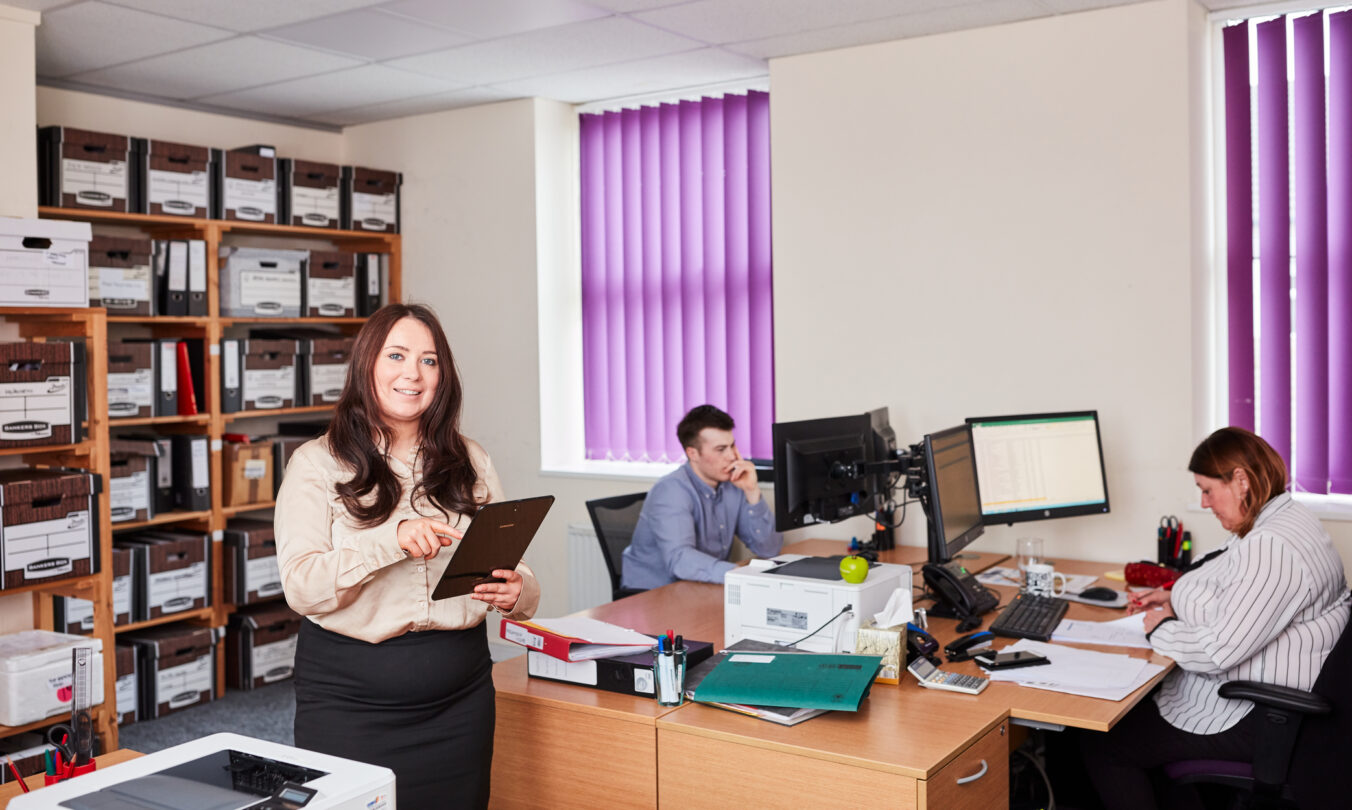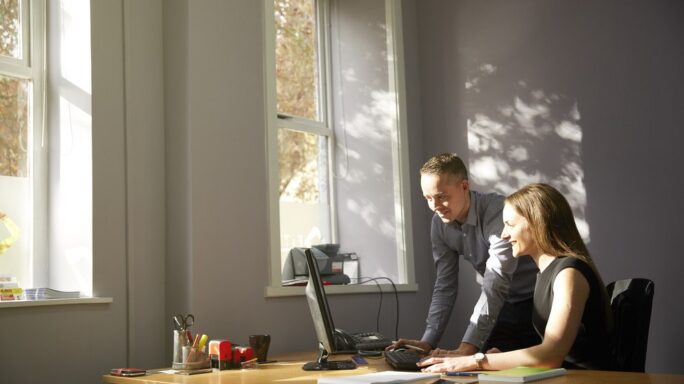Strategy, Legal & Operations
How an accountancy firm moved its clients to cloud accounting
Learn about the digital transformation of Finlayson & Co accountancy firm and its clients ahead of Making Tax Digital and how your firm can follow suit.

Making Tax Digital for VAT was one of the biggest changes in business accounting for decades. It means businesses above the VAT threshold have to adopt some form of digital accounting for their VAT records.
The government says that, as of 9 March 2020, more than 1.4 million businesses had joined the new service. More than four million VAT returns had been submitted successfully using Making Tax Digital-compatible software, with more than £41bn of payments and over £13bn in repayments having successfully flowed through the new system.
For Emily Smith, practice manager at Finlayson & Co near Huddersfield, the announcement of Making Tax Digital (MTD) for VAT back in 2017 inspired an ongoing digital transformation for her practice and its client portfolio.
The firm went from 10% of clients on cloud accounting to 80% of clients upon MTD for VAT’s introduction, with the aim of that being 100% as MTD progresses into income and corporation tax mandation in the future.
We spoke to Smith at the time of MTD’s introduction in 2019 to get her perspectives on how MTD for VAT plans progressed within her practice, and spoke to her again recently for an update.
Her story represents an inspirational example of how clients can be encouraged to adopt digital solutions – regardless of whether that’s for compliance reasons, or simply because it’s the best thing for them.
Inspiration and initial steps
The announcement of Making Tax Digital was a wake up call for many within the accountancy industry, not least Finlayson & Co’s sole partner, David Finlayson. Those of the firm’s clients that had embraced computing for their accounting mostly relied upon spreadsheets.
“We had nothing in place,” said Smith. “We had absolutely no cloud software available for clients. Basically, my boss said to me, ‘Right, you need to find out what’s happening – and find the solution!’
“I went to exhibitions and road shows across the UK. My job was to roll out Making Tax Digital in the practice and put together a plan.”
It became clear during her searches that there were many options.
“We decided to take a stance of embracing one cloud accounting solution instead of a variety,” she said. “We’re a small firm and we didn’t have the resources to be sending one person to train on one cloud solution, and somebody on another.”
The initial step following this was to start filtering the client list. This was about more than simply splitting the list into VAT and non-VAT clients.
It was about identifying the level of support each business would require, and ensuring they received it long before their first Making Tax Digital for VAT deadline.
Smith said: “Initially, we started with the ones I knew were up for digitalisation – the ones I knew that are very techy.
“Typically, they were millennials. They wanted the cloud. They wanted something that was easier for them to use. Then we worked our way down to the clients who were still using cash books for their accounting.
Demos and training
Initial communications with clients were via letter but this wasn’t a simple mail merge full of boilerplate text.
“Each letter told the client when they had to start using the software, based on their year end,” said Smith. “We told them the costings and offered incentives to get them to switch earlier – we sold the software at cost, for example, and fixed that price for the year.
“We had to spread our workload. To do that, we knew we’d have to take the hit.”
Clients who responded were given free demonstrations of the software and even offered a free initial training session. The clients who “had a good brain when it comes to digital”, as Smith said, required perhaps a few hours of training.
Those who relied on paper-based accounting required up to 11 hours of training, said Smith, and again those who signed up early got this free in an attempt to avoid the crush.
“Our initial worry was that it would be a car crash – that these clients wouldn’t know what they’re doing,” she said.
“But by offering them 100% support throughout the financial year and being there to guide them when they had queries, we’ve avoided that.”
The demonstrations were held in local pubs, where the rooms were free. They alternated evening and afternoon sessions to ensure maximum participation, and offered refreshments.
Smith said: “We ensured we only had about 15 to 20 people at each session. That felt more personal. Everybody who came signed up – 100% take up.
“We took questions and because we weren’t in the office, or a meeting room, it was much more relaxed. There were all sorts of businesses there, so it was social as well.”
MTD for accountants and bookkeepers
We've developed a range of tools to help you prepare your clients, communicate how Making Tax Digital will impact their business and guide them to a compliant solution that meets their needs.

A learning experience
The switch to a digital practice had all sorts of side effects, commented Smith.
She said: “It’s also developed relationships with clients, We were formerly quite traditional. People came in for their annual meeting and it was just the partner that took the meetings. None of us really got exposure to meeting clients.”
However, because the outreach mentioned earlier brought many staff members into contact with clients, there’s been a cultural shift within the practice.
“Staff morale has gone up,” she said. “Among clients, there’s more confidence in the junior staff. Clients are no longer just asking for David or myself.
“You can see how it boosts the confidence of all the staff. They’re having to speak to clients and advise them, whereas before they weren’t exposed to that.”
Similarly, the way the practice handled training also brought unexpected benefits.
Smith said: “It didn’t all fall on senior staff. It was great for our team in that training others helped our own staff learn.
“It actually benefited us a lot more than we initially thought it would. By going out training the clients and utilising every bit of the software, we learned a lot more ourselves and learned how the different parts of the software help other businesses.”
The future of Making Tax Digital
The story of MTD for VAT continues to be written, and practices like Smith’s continue to educate and inform their clients.
Speaking again in March 2020, she says: “MTD has been an interesting journey of ups and downs.
“The initial upscaling and training of the workforce was at first daunting but proved to be the most valuable investment we made for MTD. We could provide our clients with an informative service and make the transition seamless from end to end.
“The overall impact of MTD has been game changer for our firm. It has pushed us out of our comfort zone and made us more efficient, more resourceful and flexible for both clients and our staff.”
As of April 2021, the soft landing period for digital linking comes to an end. Put simply, this means those who have been relying on copy and pasting for the majority of their VAT accounting data – in spreadsheets, for example – will no longer be able to do so. Instead, a digital link must exist between all parts of the VAT accounting systems.
For Smith’s practice, making that deadline won’t be a problem. “We are very proud to say we have no clients left to make digital who are VAT registered!” she says, adding that the practice moved all VAT-registered clients to software on the original MTD for VAT mandation date.
Taking such a comprehensive all-or-nothing approach paid dividends for Smith’s practice and, as other forms of MTD in the future arrive, it may be the best approach for all practices.
There’s already a trial of MTD for income tax underway, and in future HMRC has made it clear corporation tax will be added.
However, with disruption caused by both Brexit and the coronavirus outbreak, there’s the possibility that they won’t be mandated for several years – even if accountancy practices are wise to start the process of converting clients sooner, rather than later.
Top tips on how to create a digital practice
Smith’s advice for converting clients and enabling a digital transformation within your accountancy firm can be summarised as follows:
- Put one person in charge: Transformational programmes within any business need strong leadership, as Smith’s story demonstrates. She not only created the plan but also drove it forward, with clear and measurable goals in mind of converting the majority of clients to digital accounting.
- Give personal service: This was at the heart of Smith’s plans. The practice contacted clients personally with a plan for their own Making Tax Digital situation, such as mentioning when they were required to be compliant. In the demo sessions, she and her staff attempted to address their personal issues, and provide a relaxed environment in which to express them.
- Provide a demonstration: The best way to learn is in person, rather than simply through brochures. Smith invited people to presentations about the software, and showed directly what it could do for them. Evening events outside of business hours were good for this, but afternoon sessions can also be enticing for those with commitments later in the day. Costs were kept low for the practice by using free rooms in pubs and offering staff time in lieu for evening events.
- Offer training: Training can be a good revenue stream as well as helping businesses, but offering an initial session that’s free of charge can be a warmly received gesture, as demonstrated by Finlayson & Co.
Editor’s note: This article was first published in July 2019 and has been updated for relevance.
Fast track your MTD plan
Putting your Making Tax Digital plan in place but need some support to see it through? Read this guide for top tips to help your practice and your clients make the move to MTD.








Ask the author a question or share your advice